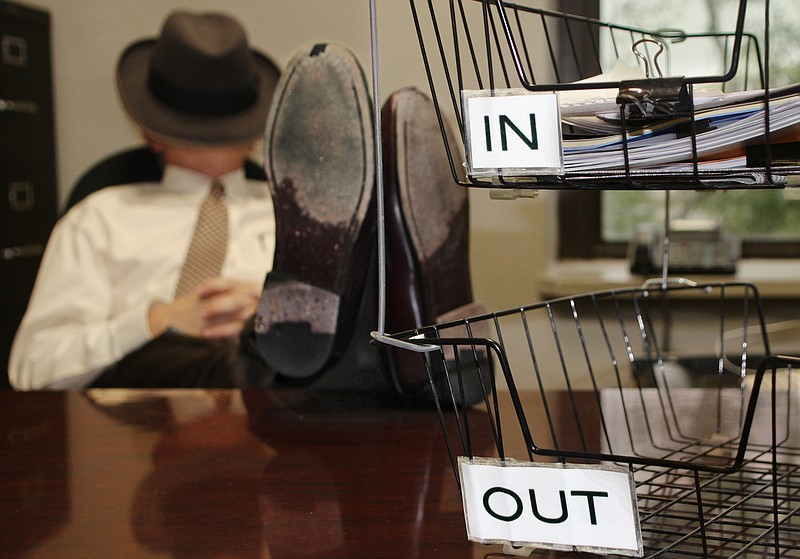In investing terms, a "glide path" describes how a mix of investments changes over time.
Typically, the mix gets more conservative — with fewer stocks and more bonds, for example — as the investor approaches a goal such as retirement.
You also can create a glide path into retirement by making gradual changes in your working and personal life in the months or years before you plan to quit work. Retirement can be a jarring transition, especially if you haven't set up ways to replace the structure, sense of purpose and socializing opportunities that work can bring, says financial coach Saundra Davis, executive director of Sage Financial Solutions, a nonprofit financial education and planning organization in San Francisco.
"People are excited to leave [work], but then once they leave, they feel that pressure of 'How do I define myself?'" Davis says. "'Am I important now that I'm no longer in the workforce?'"
Davis suggests people start by thinking about what they want from retirement. That could mean visualizing your ideal day: where you're living, what you're doing, who you're spending time with.
Free tools such as YearCompass and Unravel Your Year can help you identify what "sparks joy" for you and what you want more of in your life, Davis says. These tools allow you to reflect on your recent past and plan for the future.
"What are the things that have been calling you? What gives you energy?" Davis asks.
Your ideal retirement could face roadblocks: a lack of money, ill health or the need to provide care for someone else, for example. But understanding what you really want from this phase of your life can help you figure out ways to get what's most important, she says.
"Just because you might have some limitations, either physical or emotional or financial, don't assume that that counts you out," Davis says.
Discuss your vision of retirement with your spouse or partner to "see if you're on the same page," suggests David John, senior strategic policy adviser for the AARP Public Policy Institute in Washington. Your significant other might have different ideas about when to retire, where to live and what they want to do with their time, and those should be discussed before either of you quits working, John notes.
"We tend to assume that people agree with us, when we haven't had a formal discussion about something, and that can prove to be a mistake," John says.
EASE OUT OF WORK
Some employers have phased retirement programs that allow people to cut back to part time work while retaining a paycheck and benefits. Other companies don't have formal plans but would be willing to accommodate an employee who asks, particularly if the worker is a high performer, says Joe Casey, a retirement and executive coach in Princeton, N.J., and the author of "Win the Retirement Game: How to Outsmart the 9 Forces Trying to Steal Your Joy."
Phased plans give employers time to look for a successor while allowing workers to ease into retirement, says Melissa Shaw, a wealth management adviser for financial services firm TIAA in Palo Alto, Calif.
"They still have more freedom to start to enjoy and plan for the next phase," Shaw says. "It's a good way to transition."
If phased retirement isn't an option, a part-time job or consulting work can help people keep a foot in the work world while they shape their post-work life, Shaw adds.
STAY CONNECTED
Loneliness doesn't just diminish the quality of your days -- it also can diminish the quantity. Social isolation and loneliness significantly increase someone's odds of premature death and are associated with about a 50% increased risk of dementia as well as higher rates of depression, anxiety and suicide, according to the Centers for Disease Control and Prevention.
Many people underestimate the social connections that work provides, Davis says. They also might not anticipate how much their social circles can shrink over time as people move away or die. Davis recommends making friends of different generations to counteract that trend.
Hobbies and volunteering are among the ways to find prospective friendships, she says.
But it can also help to find friends or mentors among people who have retired, Shaw says. Senior centers, social connection sites like Meetup and the AARP Foundation's Connect2Affect service are other ways to find potential social contacts.
One of Shaw's clients connected with a group of retirees at a gym before he retired, combining his desire to stay active and healthy with an informal support group, Shaw says.
"Having others around you who have experienced retirement and who can provide support and tips and share ideas is extremely valuable," Shaw says.
Research suggests that certain serious financial mistakes are common in the years before an eventual diagnosis of dementia and can be warning signals. Read about that here: arkansasonline.com/0130credit.
This column was provided to The Associated Press by the personal finance site NerdWallet. The content is for educational and informational purposes and does not constitute investment advice.

